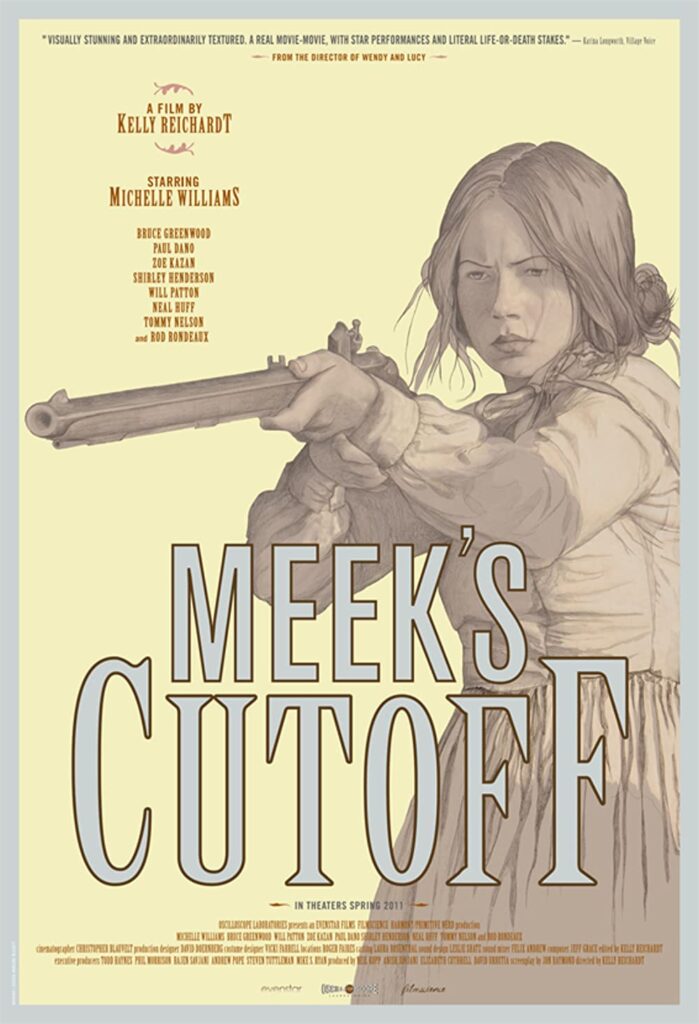Below you will find written and video materials to supplement your experience with this film. Be aware that some essays and video essays may contain spoilers.
Critical Essays
Wagon trains to the west were not jolly (Roger Ebert)
Meek’s Cutoff (AV Club)
‘Meek’s Cutoff’: An Old West, Captured For A New Era (NPR)
Sewing Spaces / Needlework in Meek’s Cutoff (Brooklyn Rail)
Countering Dominant Cinema: Temporality in Meek’s Cutoff (Senses of Cinema)
A stripped-down feminist Western (Slate)
Contextual Reading
The Quiet Menace of Kelly Reichardt’s Feminist Westerns
Neo Frontier Cinema: Rewriting the Frontier Narrative from the Margins
Vernacular Landscapes: Reading the Anthropocene in the Films of Kelly Reichardt
What is a Western Anyway? – Film School Rejects
Basic Facts About the Oregon Trail
Numbers of Female Directors and Writers Grow in Indie Films, Study Shows



